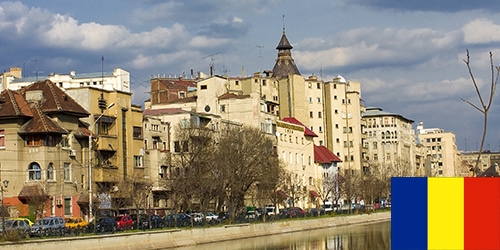Frontier Markets Focus | Romania

Romania aggressively pursues foreign direct investment by providing a number of incentive programs. But international investors should approach each one carefully.
The government of Romania touts many incentives for foreign investment, including its membership in the European Union—meaning a standardized system of laws that apply in all member states, a gateway to 500 million EU consumers—and a rank as the ninth-largest member of the EU in terms of territory.
However there are some legal limitations that Western investors need to recognize in their dealings in the country, according to an analysis prepared for Global Finance by Budapest-based Hugh Owen, partner with responsibility for Romanian transactions in global law firm Allen & Overy. The analysis cautions that transposition of EU legislation into Romanian law does not mean total harmonization of legal principles and cites differences in corporate, real estate, employment and intellectual property law.
Romanian authorities point out the country’s strategic location: close to Europe, the Balkans, the Middle East and North Africa and at the junction of three Pan-European transportation corridors. But for the most part these benefits are as yet unrealized, according to the A&O analysis.
Romania is becoming an increasingly competitive destination for foreign direct investment. Adding to its appeal, the government allows a range of commercial freedoms to outside investors, including the option of working without a local joint-venture partner, although bottom-line considerations such as local expertise and local distribution might influence the decision.
Foreign-owned companies receive the same treatment under the law as domestic investors—often termed “national treatment”—and do not face any restrictions on repatriation of capital and after-tax profits.
But challenges include bureaucracy, poor infrastructure and lack of predictability of the tax regime, whose laws change frequently. The arbitrary passage of ill-conceived revenue measures can serve as a disincentive to multinational investment, explains Owen. He notes, however, that the situation is improving.
Moreover, the US State Department cautions that the Romanian government has allowed political interests and budgetary imperatives to supersede accepted Western business practices, and that in areas such as the levying of taxes on infrastructure it resorts to emergency legislative measures, bypassing impact analyses and stakeholder consultation. In 2013 it instituted a windfall tax on profits from natural gas and on some construction.
Notwithstanding these trade-offs, Romania attracted net FDI inflows of €2.7 billion ($3.4 billion) in 2013, up from €2.1 billion in 2012 and €1.8 billion in 2011. Investors have focused on the information technology, energy services, manufacturing and consumer product sectors, according to the State Department.
Romania has surpassed Hungary in consultancy EY’s ranking of the most-attractive countries for foreign investment in Central and Eastern Europe, placing third in the region after Poland and the Czech Republic.
VITAL STATISTICS |
|---|
|
Location: Eastern Europe |
|
Neighbors: Ukraine, Bulgaria, Moldova, Hungary, Serbia |
|
Capital city: Bucharest |
|
Population (2013): 19.96 million |
|
Official language: Romanian |
|
GDP per capita (2013): $9,499 |
|
GDP growth (2013): 3.5% |
|
Inflation (2013): 4% |
|
Currency: Leu |
|
Investment promotion agencies: Department for Infrastructure Projects, Foreign Investment, Public Private Partnership and Export Promotion |
|
Investment incentives available? State aid schemes, some accelerated deductions, reduced VAT rates on some goods and services |
|
Ease of Doing Business rank: 73 (2014) |
|
Corruption Perceptions Index rank: 69 (2013) |
|
Political risk: Instability reflected in succession of prime ministers since fall of communism in 1989; ruling coalition fell apart earlier in 2014; possibility of more instability |
|
Security risk: Proximity to Ukraine |
PROS |
|---|
|
Liquid well-capitalized banking system–but with nonperforming loans estimated at over 20% |
|
Progress made in deficit reductions |
|
Deceleration in inflation |
CONS |
|---|
|
Corruption at all levels and apparent lack of will to tackle it effectively |
|
Some vulnerability to European economic problems |
|
High external debt burden |
|
Inefficiencies in state-owned enterprises |
|
Lack of infrastructure |
|
Austerity measures led to unrest and street clashes in 2012 |
Sources: A.M. Best, IMF, KPMG, Heritage Foundation, Moody’s Investors Services, National Bank of Romania, Standard & Poor’s, Transparency International, World Bank
Click for more information on Romania.
For all other countries, check out our Country Economic Reports.



